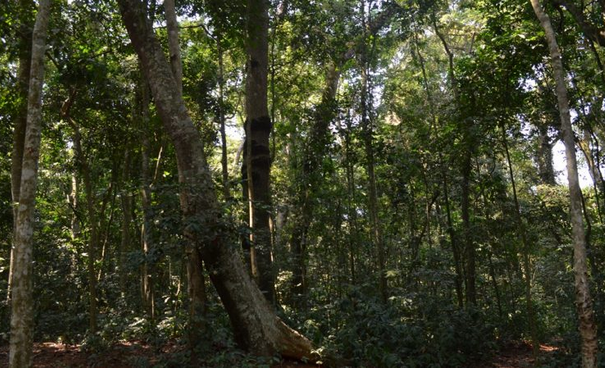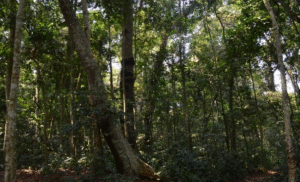
Explore Zika Forest Reserve Uganda
Explore Zika Forest Reserve Uganda : It is a tropical forest that holds significant scientific importance located in Entebbe, Uganda. Originally named after the Luganda word Zika, meaning overgrown, the forest covers approximately 25 hectares. Actually, it lies near the northern shores of Lake Victoria. It is managed by the Uganda Virus Research Institute and its part of a broader biosphere reserve known for its biodiversity. Notably, Zika Forest gained international attention in 1947 when researchers discovered a previously unknown virus in a rhesus monkey placed in the forest. Since then, the area has become a key site for arbovirus research especially those transmitted by mosquitoes.
 In addition, the forest is home to a wide variety of flora and fauna including many species of birds, insects and monkeys. Over the years, the name Zika has become more widely known due to the global Zika virus outbreaks. Particularly, the one in 2015-2016 that affected parts of South and Central America. Consequently, the forest has become symbolic in the history of infectious disease research. In conclusion, the Zika Forest is not just the namesake of a globally recognized virus, but also a vital site for scientific discovery, biodiversity, and public health monitoring. Its legacy continues to influence research and awareness in tropical medicine around the world.
In addition, the forest is home to a wide variety of flora and fauna including many species of birds, insects and monkeys. Over the years, the name Zika has become more widely known due to the global Zika virus outbreaks. Particularly, the one in 2015-2016 that affected parts of South and Central America. Consequently, the forest has become symbolic in the history of infectious disease research. In conclusion, the Zika Forest is not just the namesake of a globally recognized virus, but also a vital site for scientific discovery, biodiversity, and public health monitoring. Its legacy continues to influence research and awareness in tropical medicine around the world.
Activities carried out while here
Bird Watching
One of the most popular activities in the Zika Forest is birding, thanks to its rich avian biodiversity. The forest is home to numerous native and migratory bird species, making it a prime destination for all bird watchers. Among the many species, visitors may spot here include; hornbills, Turacos, weaver birds, sunbirds, etc. In fact, the forest’s peaceful environment and dense canopy offer an ideal setting for observing birds in their natural habitat. Additionally, early mornings and late afternoons provide the best opportunities as this is when birds are most active. As a result, birding in the Zika Forest not only offers enjoyment but also supports conservation through citizen science and eco-tourism.
Nature Walks
Besides birding, the Zika Forest is perfect for nature walks allowing visitors to explore the beauty and serenity of a tropical ecosystem. Guided or self-led walks take visitors through narrow forest trails surrounded by towering trees, vines and undergrowth teeming with life. Furthermore, these walks provide chances to observe birds, insects, butterflies, monkeys and even medicinal plants. Guides often share fascinating information about the forest’s history, its role in virus research and its unique biodiversity. Consequently, nature walks are both educational and relaxing, offering a peaceful retreat from urban life and a deeper appreciation of nature.
Picnics
In addition to exploration, the Zika Forest is also a lovely spot for picnics, especially for families, school groups and eco-tourists. Certain open areas within or around the forest are suitable for setting up picnic mats and enjoying meals amidst nature. Moreover, the calm atmosphere, bird songs and cool shade make it an ideal environment for relaxing. While enjoying a picnic, visitors are encouraged to respect the forest by not littering and avoiding any disruption to wildlife. Ultimately, picnicking here combines leisure with environmental appreciation in a safe and serene natural setting.
Environmental Studies
Most importantly, the Zika Forest serves as a key site for environmental studies attracting students, researchers and conservationists. It offers a real-world setting to study topics such as forest ecology, biodiversity, climate patterns and the human impact on ecosystems. In this context, schools and universities often organize field trips for practical learning where students can engage in data collection, species identification, and ecosystem mapping. Additionally, long-term research projects are conducted to monitor changes in biodiversity and forest health. Therefore, environmental studies in Zika Forest play a vital role in educating the next generation of scientists and environmental advocates.
How to get there
You can reach the Zika Forest by traveling about 25 kilometers from Kampala, Uganda towards Entebbe. It’s easily accessible by car and located near the shores of Lake Victoria. In Conclusion, the Zika Forest is far more than a historical site of virus discovery, it is a thriving ecosystem teeming with life. Furthermore, its dense vegetation, diverse wildlife, and unique ecological features make it a valuable natural habitat worth protecting. Because of this, the forest plays a crucial role in maintaining regional biodiversity and supporting scientific research. Ultimately, preserving the Zika Forest means safeguarding a rich and irreplaceable part of our planet’s natural heritage.
- 0
- 0


